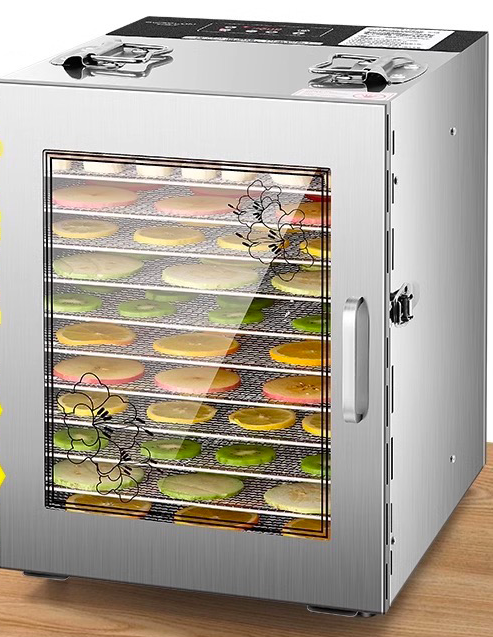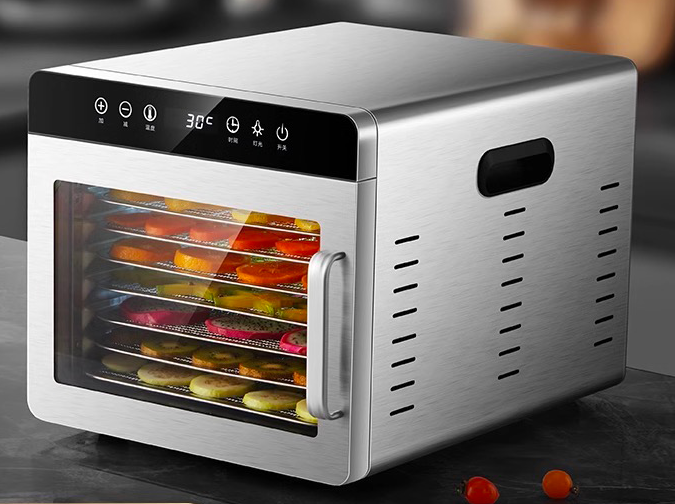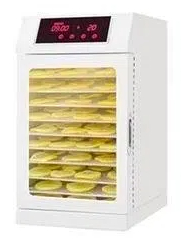
Content Menu
● Understanding Heat Pump Dryers
>> Components of a Heat Pump Dryer
>> How Heat Pumps Work
● Advantages of Heat Pump Dryers
>> Applications in Various Industries
● Operational Guidelines for Heat Pump Dryers
>> Maintenance Tips for Longevity
● Do You Need Ventilation?
>> Signs That Ventilation May Be Needed
● Conclusion
● Common Questions about Heat Pump Dryers
>> 1. What types of foods can be dried using a heat pump dryer?
>> 2. How long does it take to dry food in a heat pump dryer?
>> 3. Is it necessary to pre-treat foods before drying?
>> 4. Can I use a heat pump dryer for commercial purposes?
>> 5. What maintenance is required for a heat pump dryer?
Food drying is an essential process in food preservation, enhancing flavors, and extending shelf life. As a manufacturer of food drying machines, understanding the intricacies of heat pump dryers and their ventilation needs is crucial for optimizing performance and ensuring quality output. This article delves into the workings of heat pump dryers, their advantages, operational guidelines, and common queries related to ventilation requirements.

Understanding Heat Pump Dryers
Heat pump dryers operate on the principle of the reverse Carnot cycle, which efficiently extracts moisture from food while preserving its color, shape, and nutritional value. These machines absorb low-temperature heat from the environment and convert it into high-temperature heat through a refrigeration cycle. This heated air is circulated within the drying chamber to remove moisture from the food.
Components of a Heat Pump Dryer
A typical heat pump dryer consists of:
- Heat Pump Unit: The core component that manages heat extraction and distribution.
- Drying Chamber: An insulated space where food is placed for drying.
- Fan System: Circulates air throughout the chamber to ensure even drying.
- Control System: Allows users to set temperature and humidity levels according to specific food items.
How Heat Pumps Work
The heat pump dryer operates by extracting moisture from food items through a continuous cycle of evaporation and condensation. Here's a simplified breakdown of the process:
1. Evaporation: The heat pump absorbs heat from the environment, which is then used to evaporate moisture from the food inside the drying chamber.
2. Condensation: The moisture-laden air is passed through a condenser where it releases its moisture, which is collected as water.
3. Recirculation: The now-dry air is reheated and recirculated back into the drying chamber, continuing the process until the desired moisture content is achieved.
This closed-loop system not only improves energy efficiency but also enhances the overall drying quality by maintaining a consistent temperature and humidity level.

Advantages of Heat Pump Dryers
Heat pump dryers offer several benefits over traditional drying methods:
- Energy Efficiency: They consume significantly less energy (up to 70% less) compared to conventional dryers by utilizing ambient air for heat.
- Nutrient Preservation: The low-temperature drying process helps retain vitamins and minerals in food products.
- Versatility: Suitable for a wide range of materials including fruits, vegetables, meats, herbs, and even seafood.
- Environmentally Friendly: They produce minimal emissions and are designed to be sustainable.
- Cost-Effective Operation: While initial investment may be higher than traditional dryers, the long-term savings on energy costs make them economically viable for both small-scale and industrial operations.
Applications in Various Industries
Heat pump dryers are not limited to just home use; they find applications across various industries:
- Agriculture: Farmers use these dryers to preserve seasonal harvests for year-round availability.
- Food Processing: Manufacturers utilize heat pump technology for producing dried fruits, snacks, and instant meals.
- Herbal Medicine Production: The preservation of medicinal herbs requires careful drying processes that maintain active compounds.
- Culinary Arts: Chefs employ these dryers for creating unique dishes with concentrated flavors by dehydrating ingredients.
Operational Guidelines for Heat Pump Dryers
To achieve optimal results with heat pump dryers, follow these operational guidelines:
1. Pre-Drying Preparation:
- Select Quality Produce: Use fresh, high-quality ingredients for the best results.
- Clean Thoroughly: Ensure all food items are washed properly to remove any contaminants.
- Slice Uniformly: Cut food into uniform pieces to promote even drying.
2. Loading the Dryer:
- Arrange food evenly on trays without overcrowding to allow proper air circulation.
- Maintain a thickness of no more than 5 cm for effective moisture removal.
3. Setting Parameters:
- Adjust the temperature between 20°C to 80°C based on the type of food being dried.
- Set humidity levels appropriately; typically around 10% for effective drying.
4. Monitoring Process:
- Regularly check progress without opening the dryer frequently to maintain internal conditions.
- Use the control system to adjust settings as needed based on feedback from initial batches.
5. Post-Drying Storage:
- Store dried products in airtight containers to prevent moisture absorption.
- Vacuum sealing is recommended for long-term storage to maintain quality.
Maintenance Tips for Longevity
Proper maintenance is essential for ensuring that your heat pump dryer operates efficiently over time. Here are some tips:
- Regular Cleaning: Clean filters regularly to prevent dust accumulation that can hinder airflow and efficiency.
- Inspect Seals and Insulation: Check door seals and insulation regularly to ensure no air leaks occur that could affect performance.
- Monitor Performance Metrics: Keep an eye on temperature and humidity readings during operation; any significant deviations may indicate maintenance needs.
Do You Need Ventilation?
The question of whether ventilation is necessary for heat pump dryers can be nuanced:
- Closed System Operation: Most modern heat pump dryers are designed as closed systems where air is recirculated within the chamber. This minimizes external air infiltration and helps maintain consistent internal conditions.
- Humidity Management: While these machines effectively manage humidity through their dehumidification systems, some models may require external ventilation if humidity levels become excessively high or if there is a risk of overheating.
- Cooling Requirements: Adequate ventilation may be necessary if the dryer operates continuously or in high ambient temperatures. This ensures that components do not overheat and that airflow remains optimal.
Signs That Ventilation May Be Needed
If you observe any of the following signs during operation, consider implementing additional ventilation:
- Excessive condensation forming inside the dryer chamber.
- Overheating components or unusual temperature spikes.
- Persistent high humidity levels despite normal operational settings.
Conclusion
Heat pump dryers represent a significant advancement in food preservation technology. Their energy efficiency, versatility, and ability to maintain nutrient content make them an excellent choice for both home users and commercial enterprises. Understanding their operational requirements—including ventilation needs—can help maximize their effectiveness and ensure high-quality dried products. By following best practices in operation and maintenance, users can enjoy all the benefits these innovative machines have to offer while contributing positively to sustainability efforts in food processing.

Common Questions about Heat Pump Dryers
1. What types of foods can be dried using a heat pump dryer?
A wide variety of foods can be dried including fruits (like apples and mangoes), vegetables (such as carrots and spinach), meats (beef jerky), herbs, and seafood. Each type requires specific settings regarding temperature and time for optimal results.
2. How long does it take to dry food in a heat pump dryer?
Drying times vary depending on the type of food and moisture content but typically range from 4 to 8 hours per batch. Factors such as slice thickness and initial moisture content can influence these times significantly.
3. Is it necessary to pre-treat foods before drying?
Pre-treating foods like fruits with lemon juice or blanching vegetables can enhance flavor and preserve color but is not always required. It can help in preventing browning in certain fruits while also improving texture post-drying.
4. Can I use a heat pump dryer for commercial purposes?
Yes, many heat pump dryers are designed for industrial use, capable of handling large volumes efficiently while maintaining product quality. They are suitable for small businesses as well as larger commercial operations looking for sustainable drying solutions.
5. What maintenance is required for a heat pump dryer?
Regular cleaning of filters, checking seals for wear, ensuring proper airflow, and monitoring performance metrics are essential maintenance tasks that help prolong the life of the machine. Additionally, periodic professional servicing can ensure optimal performance over time.












